Tuning Tricks for Fixed Blade Broadheads
Posted by Kristofer Skelly - On FaceBook - Kris Skelly - BowTech Pro-Staff on May 14th 2019
You've seen it, we've all seen it... “Fixed or Mechanical?” It’s become a constant back and forth with pros and cons of each. When the mechanical broadheads came on the scene, it really helped many with arrow flight and “tuning” issues. They became a bit of a shortcut to tuning, mostly because mechanical heads lack surface area while in an un-deployed state. The larger surface area of fixed blade heads coupled with today’s speed bows (300+ FPS) exaggerates flaws in our bow/arrow tuning. In a way mechanical heads mask tuning issues, as they cover up the flaws that can be seen with fixed heads.
As a faithful mechanical broadhead user for many years, I decided I would try to tackle tuning fixed blade heads with my current setup: Bowtech Reign 7, 70lbs, 400gr arrow at 298-300fps. A well-tuned, perfect flying arrow will not only find its mark, but also penetrate deeper than one that isn’t properly tuned or has erratic flight. Arguably, a fixed blade head gives you a higher probability of a pass through IF flight is as true as possible. A fixed head with no moving parts or expansion on impact has less energy expended, and this equates to deeper penetration. What I found was the following to try and get the best tune, and thus, the best flight of my arrow.
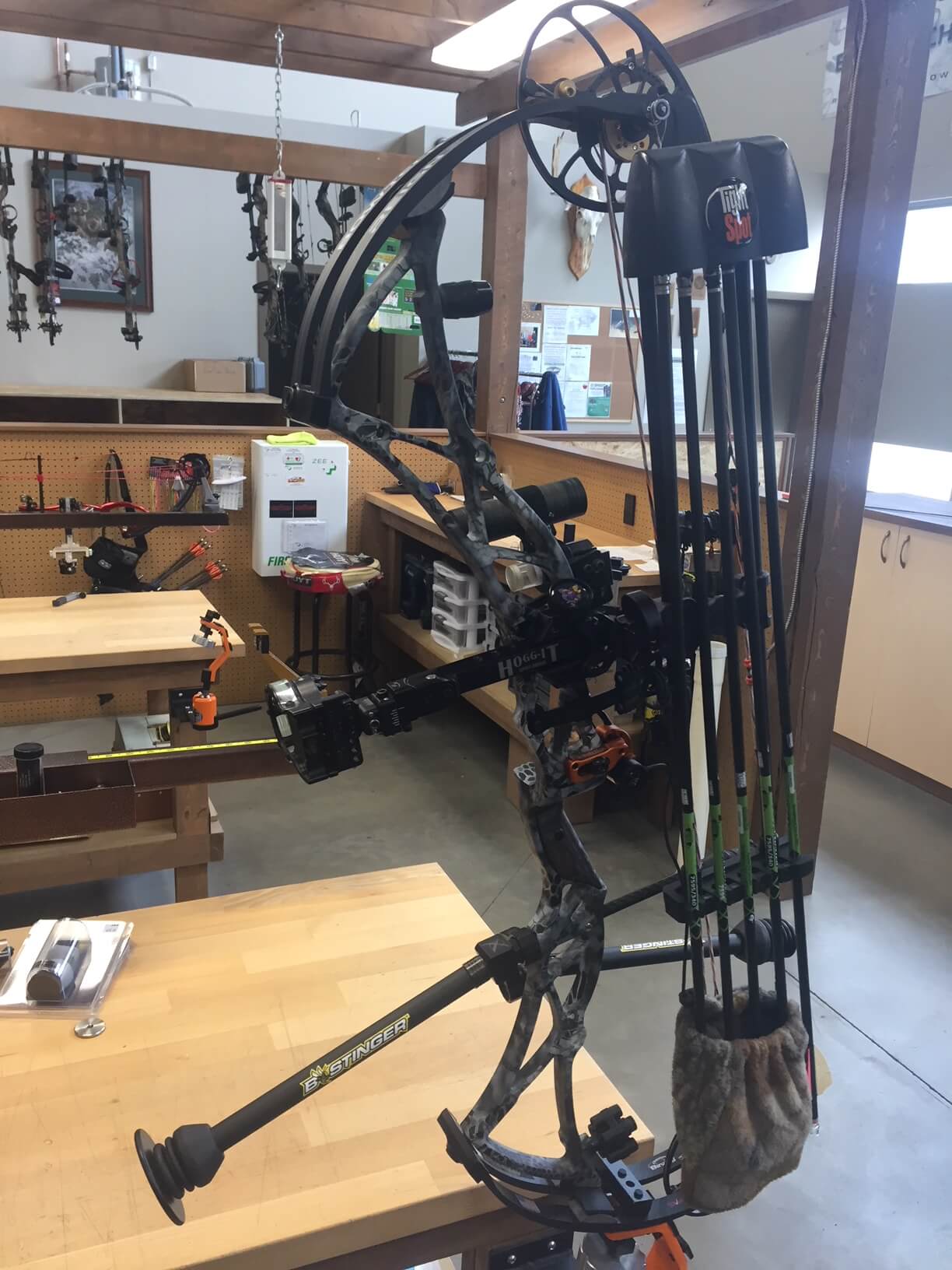
New strings installed and all initial “bench” tuning completed
So first off, you you need to confirm:
- The cam lean
- The cam timing
- Center shot
- Level nocking point
- D-loop length
- Installation
Once I do this, I paper tune my bow to a "bullet Hole." Once I have confirmed the “bullet hole” on a fletched arrow at ~3-5 yards, I then use an arrow stripped of all vanes to perform a bare shaft tune at 10 yards. Most times, a bare shaft arrow will fly true to the same point of impact as a fletched arrow at, if everything is setup perfect. I do this because a bare shaft arrow will behave similarly to a fletched arrow with a fixed blade broadhead attached.
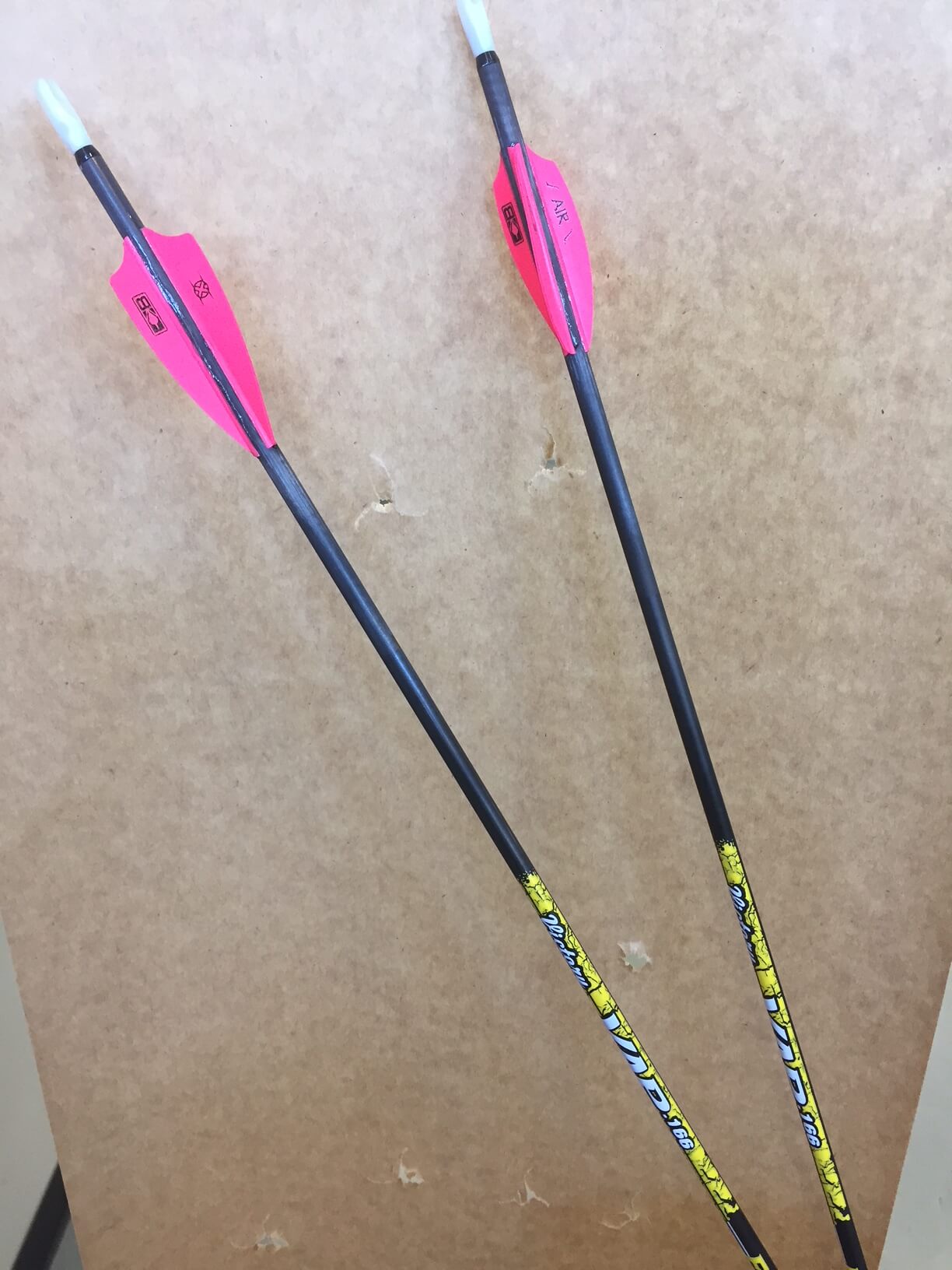
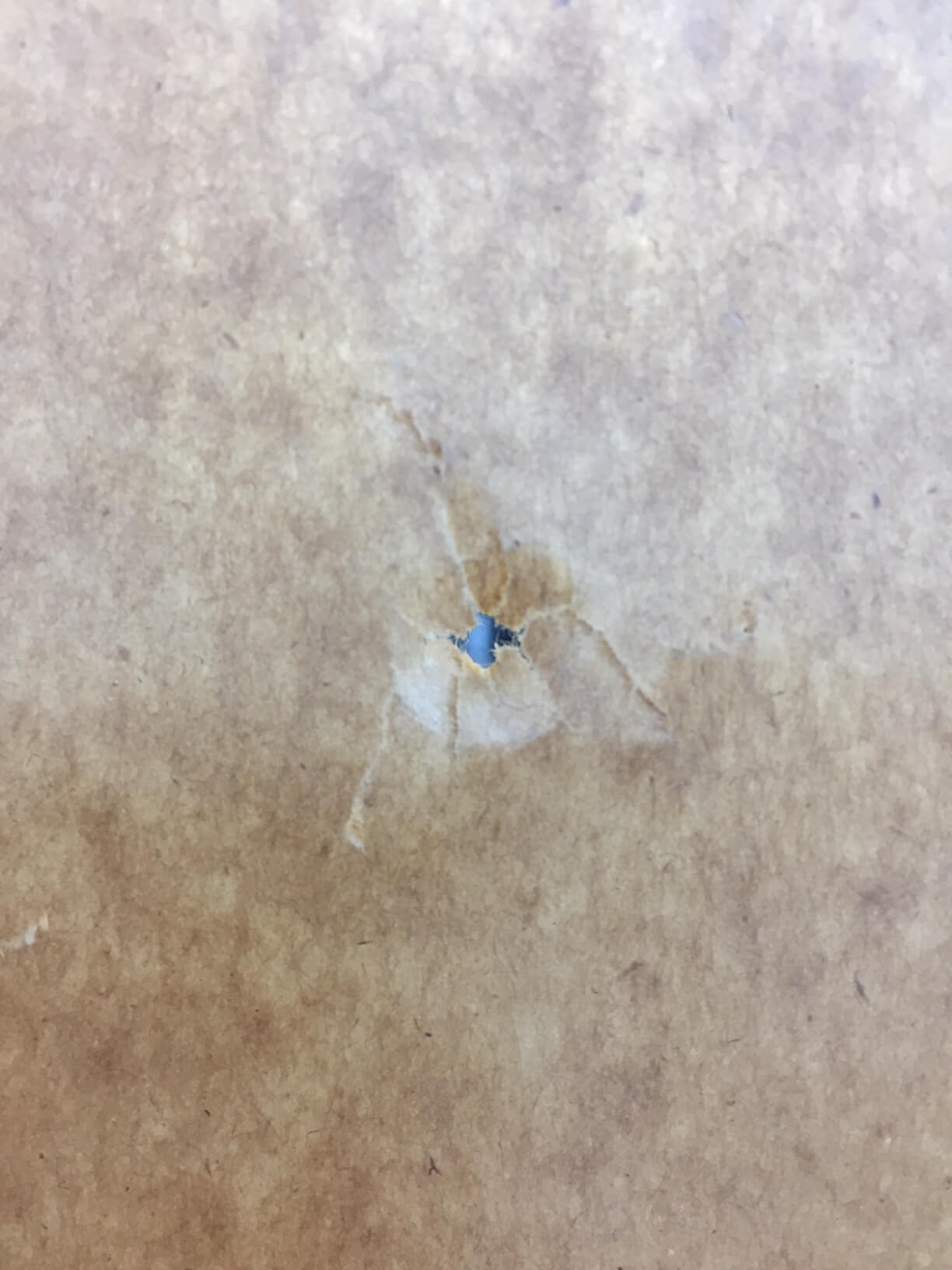
Paper tuned perfect bullet holes
A couple things to look for when shooting a bareshaft:
- Does it hit your point of aim?
- Does the shaft enter the target straight (ie. the nock directly behind the point)?
For success the arrow needs to end up entering the target perfectly straight. You may need to move your rest up/down or left/right with the most minute adjustments in order to achieve this. Depending on your bow, you can twist the yokes to assist with arrow flight as well. Keep in mind yoke adjustments will affect timing, so that continually needs to be monitored as well. Once I confirm I can get good flight out of bare shaft at 10 yards, I step it back to 20 yards. I have found at distances past 20 yards, the arrows can become unstable in flight, I haven’t had to bare shaft tune farther than 20 yards.
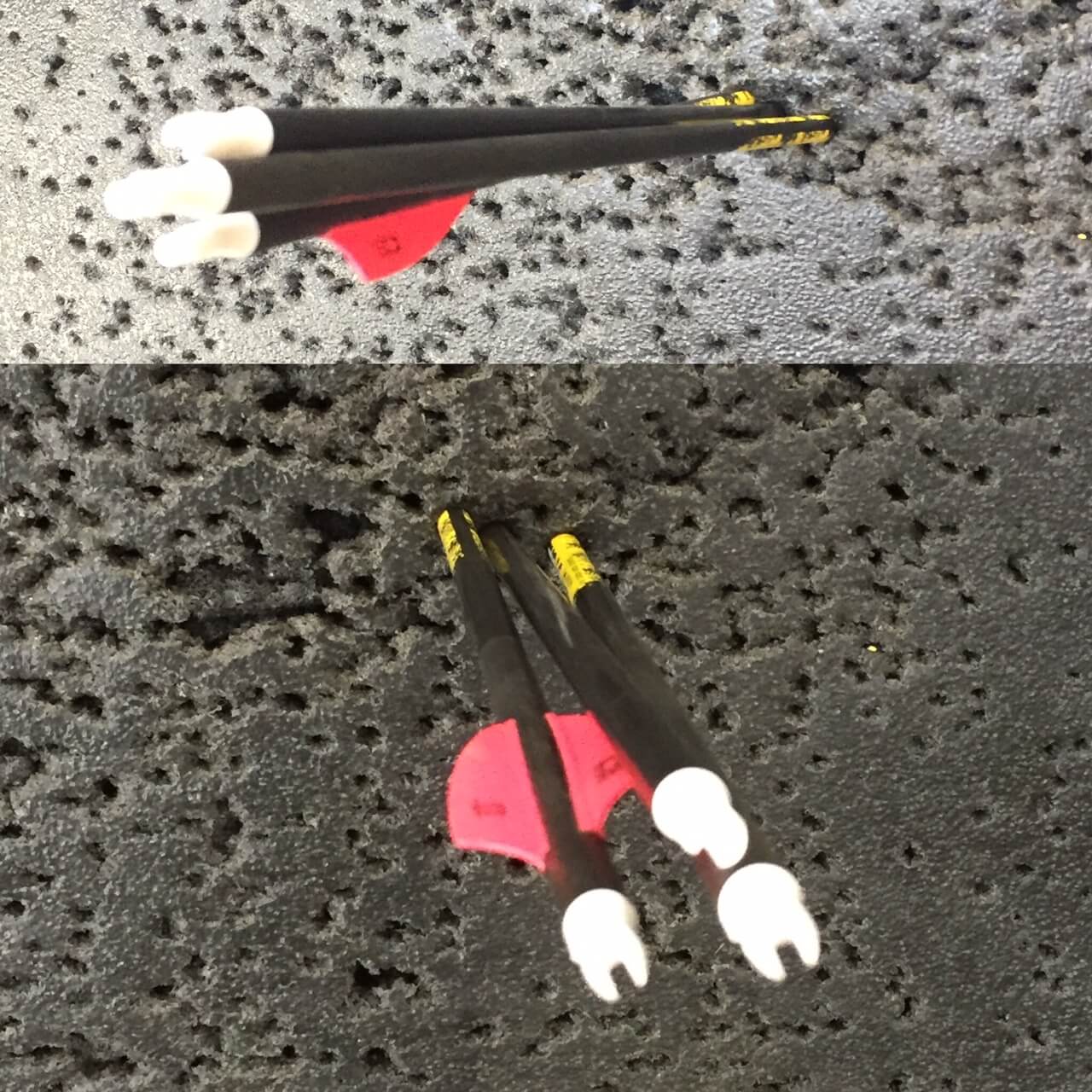
20 yard bare shaft and fletched shaft
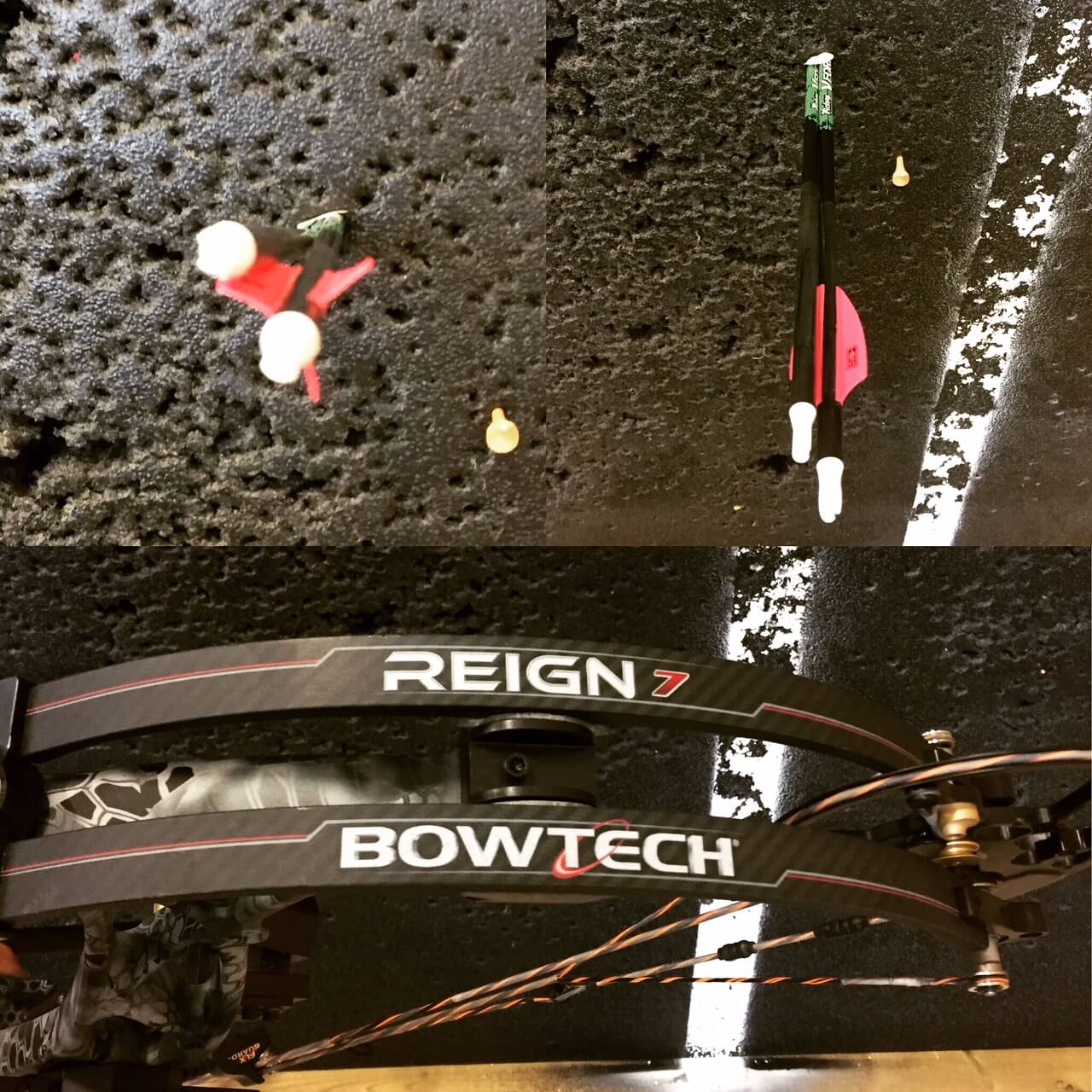
Great results…and how awesome do those 60X Custom Strings look?
20 yards is where things get even more tight and stringent when it comes to making rest or yoke adjustments. Things also related to this this method of tuning that I should mention:
- The spine of the chosen arrow
- The point weight (also related to spine)
- The poundage your bow is set to (again related to spine of your arrow)
These can also affect your arrow flight, point of impact, and relationship between the point end and the nock end of your arrow. A general rule of thumb in picking an arrow is to choose the stiffer spine if your chart shows you closer to the stiffer side. A fixed blade head will generally cause fewer tuning issues if using a stiffer spine vs. a weaker one. I believe this is because the flex of the arrow when it comes out of the bow will correct faster with less oscillation than that of a weaker spine. An arrow that settles in faster will continue a more consistent path to the target.
I have found that if I can get a bare shaft arrow to fly straight with the same point of impact as a fletched arrow at 20 yards, I have a very high likelihood of being successful at tuning a fixed blade head at moderate (40-50 yards) and even extreme shooting distances (out to 80-100 yards). While I would never shoot at an animal at 80-100 yards, I test the flight of the arrow to those distances. I have found when shooting outside with environmental influences, I cannot always get the fixed head tipped arrow and the target tipped arrows to have the same point of impact. This doesn’t really concern me as I adjust my sight on my hunting bow for the broadhead impact. It makes sense that if you change the composition of the arrow (fixed head vs target point) you may not get the same end result. If the head is flying true, and entering the target straight, I am not worried about matching the point of impact with field points, although this can be achieved at times. Depending on the size of the head, the cutting diameter, or style of broadhead I may not be able to tune to same point of impact as field tips or achieve accurate flight to all distances.
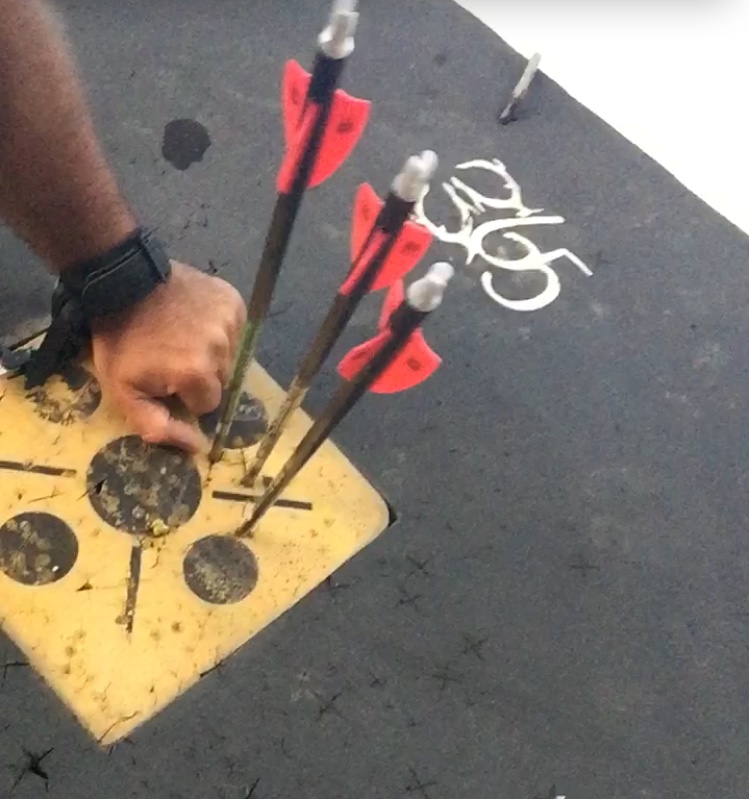
Three arrow group using fixed blades at 100 yards.
It is really important to shoot your broadhead setup to all distances you plan on hunting at. Know your limit and stay within it! This cannot be stressed enough. You can’t make something out of nothing when bowhunting, so practice to at least the maximum distance you plan to hunt at. If possible practice farther to give you confidence or show your practical limitations. Also practice from a variety of field positions like kneeling or sitting, to again get used to shooting from odd positions. Quite often in the moment of truth we aren’t standing perfectly upright with perfect form, and we need to know these things before we are put in that position on the hunt of a lifetime.
These steps are just part of trying to broad head tune. Other steps such as:
- Walk back tuning
- Nock turning each arrow
- Testing different fletching (ie. degree offset or helical, number of fletches, length and profile of fletches) can further serve to fine tune things.
Hopefully these steps described above when applied to fixed blade tuning helps you get what you need out of your setup. These can also be applied to mechanical head tuning. It has helped me get the most out of my gear and instill full confidence in both my equipment and my capabilities as a bowhunter.







